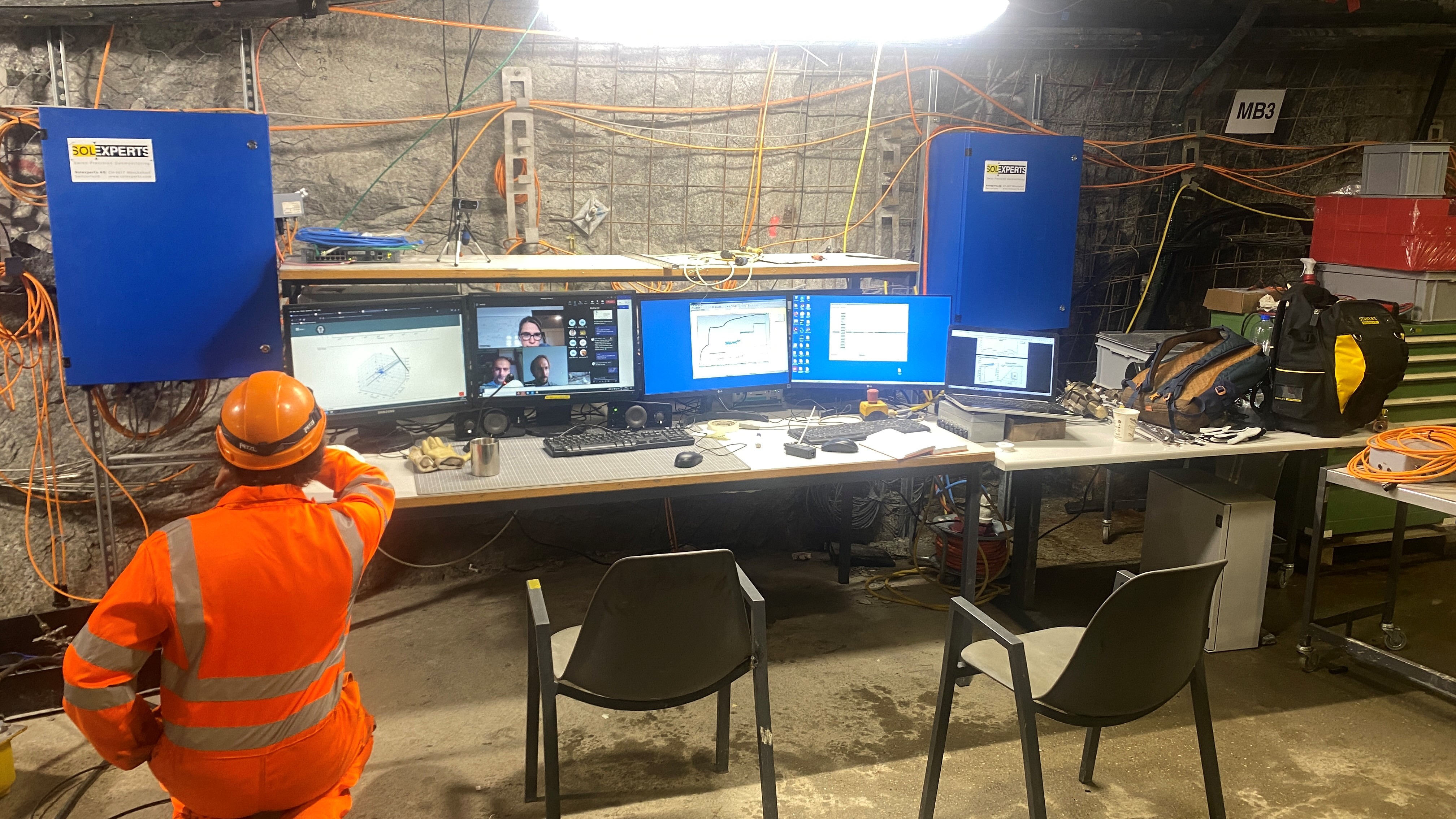2022-06-22
Reservoir engineering phase of the VALTER project about to start

After a short break for data analysis and planning, the VALTER team resumes with the stimulations that are part of the Bedretto Reservoir Project. This week, the next phase (Phase 2), the actual reservoir engineering phase, is going to start. The main aim is to stimulate approximately four borehole intervals for a period of up to 48 hours to create a connection between two boreholes, namely borehole ST1 and ST2.
Starting from today, the VALTER team is going to carry out hydraulic stimulations of four intervals until September 2022. In the past phase of the VALTER project, the intervals (=borehole segments) in borehole ST1 had been stimulated according to a stimulation protocol with consistent and predefined injection protocols. Based on the data from Phase 1, the fracture systems linked to the different borehole intervals were characterized and the most promising segments selected for Phase 2.
In Phase 2, approximately four intervals that turned out to be most suitable for connecting the boreholes ST1 and ST2 are going to be further enhanced. By stimulating an interval over a period of up to 48 hours, the water creates new small fractures in the rock and ideally connects the boreholes ST1 and ST2. The distance between the boreholes ST1 and ST2 is 35 meters. High-precision temperature sensors will be installed in borehole ST2. If the connection is successful, this will result in subtle changes in the temperatures measured in borehole ST2.
Hydraulic stimulations (injection of water under pressure) will enhance transmissivity through both seismic and aseismic deformation. Transmissivity is an indicator of the amount of water fractures can transmit. While more than 99% of the hydraulic energy is released without creating seismic events (aseismically), through creeping processes, we expect that again numerous tiny earthquakes will accompany the stimulation. Seismologists call earthquakes in the magnitude range -4 to -2 nanoseism.
The network installed at Bedretto is also able to detect events down to a magnitudes of -6, so called picoseism. During the upcoming Phase 2 stimulation numerous pico- and nanoseismic events are planned to be recorded again that are not only needed to create the reservoir but also represent a rich source of information on the reservoir evolution. The largest events observed during the Phase 1 stimulation was a magnitude -3. Slightly higher magnitudes are expected to be observed in Phase 2, since more water will be injected.
To make sure that the operations are safe, the injection is halted and bleed off initiated as soon as predefined safety thresholds in magnitude or vibration are reached. Besides that, the seismologists of the VALTER team are going to monitor the stimulations continuously and watch out for unusual developments.
Between the stimulations, a period of around three to four weeks is needed for data analysis. With this final phase, the scientists expect to gain insights into safe reservoir engineering on a scale that is meaningful for real-world applications, such as the geothermal project planned in Haute Sorne.

